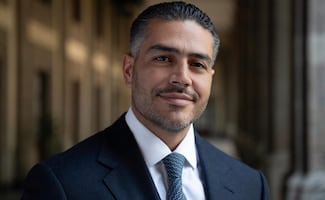Más Información

New York Times destaca rol de Harfuch en el combate del narco; resalta intercambio de inteligencia con EU

Marco Rubio destaca labor de seguridad de México; "están haciendo más que nunca en su historia", afirma

"Queremos cerrar este capítulo", dice Salinas Pliego al SAT; esperarán a enero a conocer fundamentos legales de adeudo fiscal
According to specialists, recent conflicts between small-scale drug traffickers operating in Mexico City , as well as an overwhelming impunity for bearers of firearms, has caused the first period of the present year to be the most violent in the last 20 years regarding first-degree murder.
In a 20-year period, there hadn’t been such high rates on pretrial investigations for first-degree murder as there have been on the first four months of 2018, with a total of 382.
Statistics from the Executive Secretariat of the Public Security National System started on 1997 , and from that year to date, the highest rate had been registered in 1999, with 309 pretrial investigations between the months of January and April . Over the last two decades, there have been 5,808 pretrial investigations for murder. For 3,181 of them, the use of firearms was reported; meaning half of these murders were committed through the use of firearms. That trend has remained intact since 1997.

The situation apparently jumped out of control in 2016 , when executions started rising. Mexico City’s attorney general’s office (PGJ) explained that said year closed with a total of 289 pretrial investigations and 300 victims , with higher rates on the month of March .
This phenomenon was detonated by various factors, such as the rivalry between small-scale drug traffickers fighting for territory and the incapacity and lack of experience of the capital’s authorities to fight organized crime.
“The city police was taken by surprise. They were used to fighting only theft and occasionally confront one or two armed criminals, but they didn’t have any experience in fighting drug traffickers and withstanding drug-related violence . And then, most importantly, they systematically denied that there was a drug problem. Now, it has been accepted, and several strategies are being implemented with positive results ,” explained Claudia Odriozola , a criminologist from the National Autonomous University of Mexico (UNAM).
In addition to reinforcements in police operatives for the areas that show the highest levels of violence, attorney and sociologist Luis Hinojos explained that small-scale drug traffickers must be fought.
“ We must cut off their drug supply . At this point, they have established some very specific procurement networks so, by cutting off their supply, you take away 70% of their profit and they start growing weak. If we let them grow, they’ll become unstoppable ,” Hinojos commented, adding that impunity was also one of the main challenges of law-enforcement.
dm
Noticias según tus intereses
[Publicidad]
[Publicidad]











